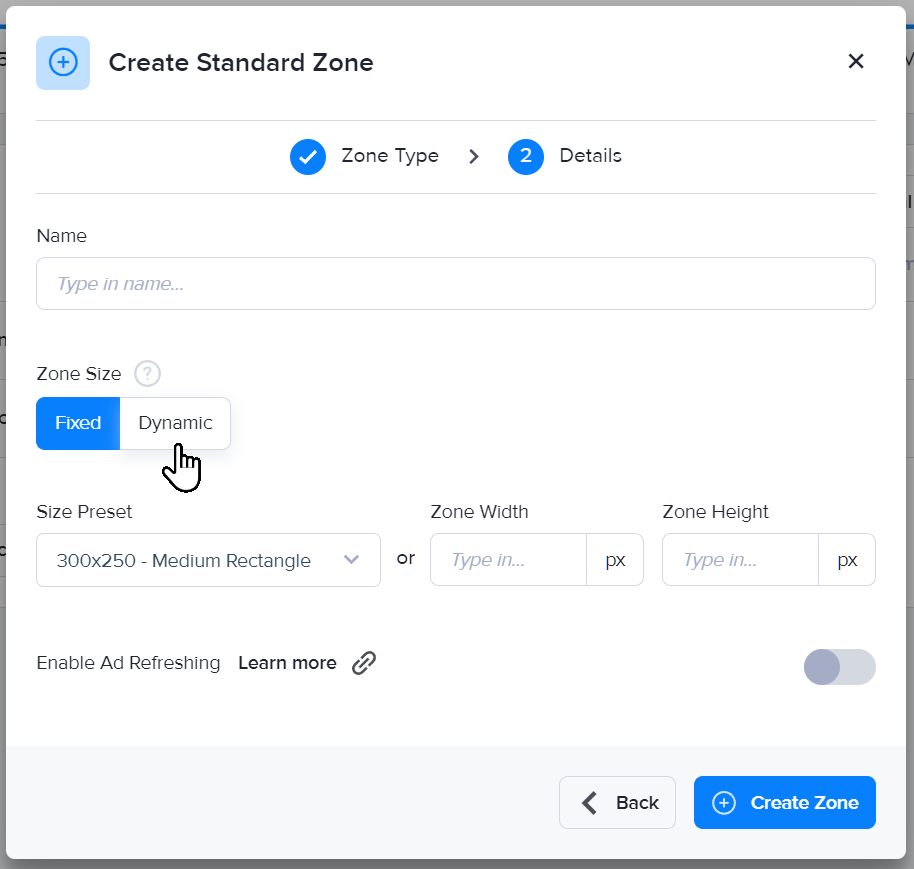Dynamic zones
Fixed zones vs. dynamic zones

When you create a zone in AdButler, you must choose whether it will be fixed or dynamic in terms of the ad size that it will accept. A fixed zone accepts only ad items and campaigns with ad items that match its size. For example, a 300 x 250 pixel fixed zone will accept only ad items that are also 300 x 250 pixels. This restriction ensures that all ads assigned to the zone will fit and look great on the page or app.
A dynamic zone on the other hand can accept and will show ads of any size. This is great when you want to run different sized ads in that zone, say a 300 x 250 ad for the desktop version of a page, and a 320 x 50 ad for the mobile version. Dynamic zones also allow for interstitial popup ads.
However, the lack of ad size restrictions in dynamic zones also means that you could end up with awkward looking ads. For example, a 300 x 600 ad will be resized to fit in a dynamic zone where the actual space on the page is meant for a 728 x 90 leaderboard ad. This means you still need to consider the actual available space on the publisher's website or app when assigning ads to a dynamic zone.
Another important aspect to note with dynamic zones is that they're not suitable for zones that are meant to be auctioned off. That's because the zone tag of dynamic zones is a synchronous Javascript tag. This type of zone tag tells the webpage to wait for the ad to load so that both the ad and the contents of the page load in sync. In contrast, ads in fixed zones can be requested via an asynchronous Javascript zone tag. This type of zone tag allows for the web page to go ahead and load separately from the ad.
Normally, the delay in syncing the ad with the rest of the page's contents is imperceptible to the website visitor or app user, as it's usually only between 50 to 80 milliseconds. However, that period is compounded when a zone is auctioned off using programmatic or automated bidding.
When a zone is open for bidding, its zone tag triggers an automated auction each time someone wants to view the publisher's page. This auction takes bids from numerous advertisers and ad exchanges that want to show ads. The auction does resolve quickly, but because the synchronous Javascript zone tag is telling the web page to wait for the ad to load, the resulting load time of the entire page will often be significantly longer than if the page had a fixed zone with an asynchronous Javascript zone tag.